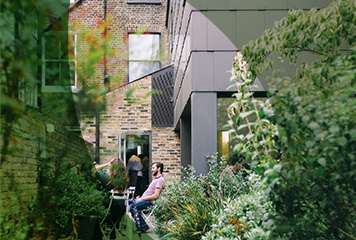Most locals will know that St Albans has featured many times on TV and in films – the Abbey Gateway standing in for an Oxford College in Inspector Morse, Fishpool Street appearing in episodes of Foyle’s War, and the Abbey itself substituting for Westminster Abbey in the film Johnny English to name just a few.
However, the St Albans location seen most often on British screens is undoubtedly the gatehouse of the former St Albans Prison, which stood in for the entrance to Slade Prison in the title sequence of the Ronnie Barker comedy Porridge. Granted this is due to the number of times the show has been repeated since it was first aired in 1974, with the 21 episodes being repeated many times over the years on BBC and now showing again on the Yesterday channel.
Although St Albans Prison closed many years ago parts of the gatehouse are still in use as St Albans Register Office, located at 1 Victoria Square, Victoria Street, just a short walk from the railway station.
One of the most notorious inmates of St Albans Prison was a young house maid called Mary Ann Ansell. In July, 1899, Ansell was hanged at the prison after being found guilty of murdering her 19 year old sister Caroline, an inmate at Leavesden Mental Asylum in Abbots Langley. In order to pay for a marriage licence Mary Ann took out an insurance policy on her sister`s life, before lacing a cake with rat poison and sending it to her at the asylum. Despite the convincing evidence of her guilt many people urged leniency in the case, including the Daily Mail newspaper and 100 MPs who signed a petition urging a postponement of the execution until an assessment of Mary Ann`s mental state could be made. However, the Home Secretary could not be persuaded and deemed that the sentence must be carried out, as was usual in cases of deliberate poisoning.
Mary Ann Ansell was initially buried in an unmarked grave within the prison, before she was re-interred at St Albans City Cemetery in 1931. She has the dubious honour of being the last woman to be hanged in the nineteenth century.




